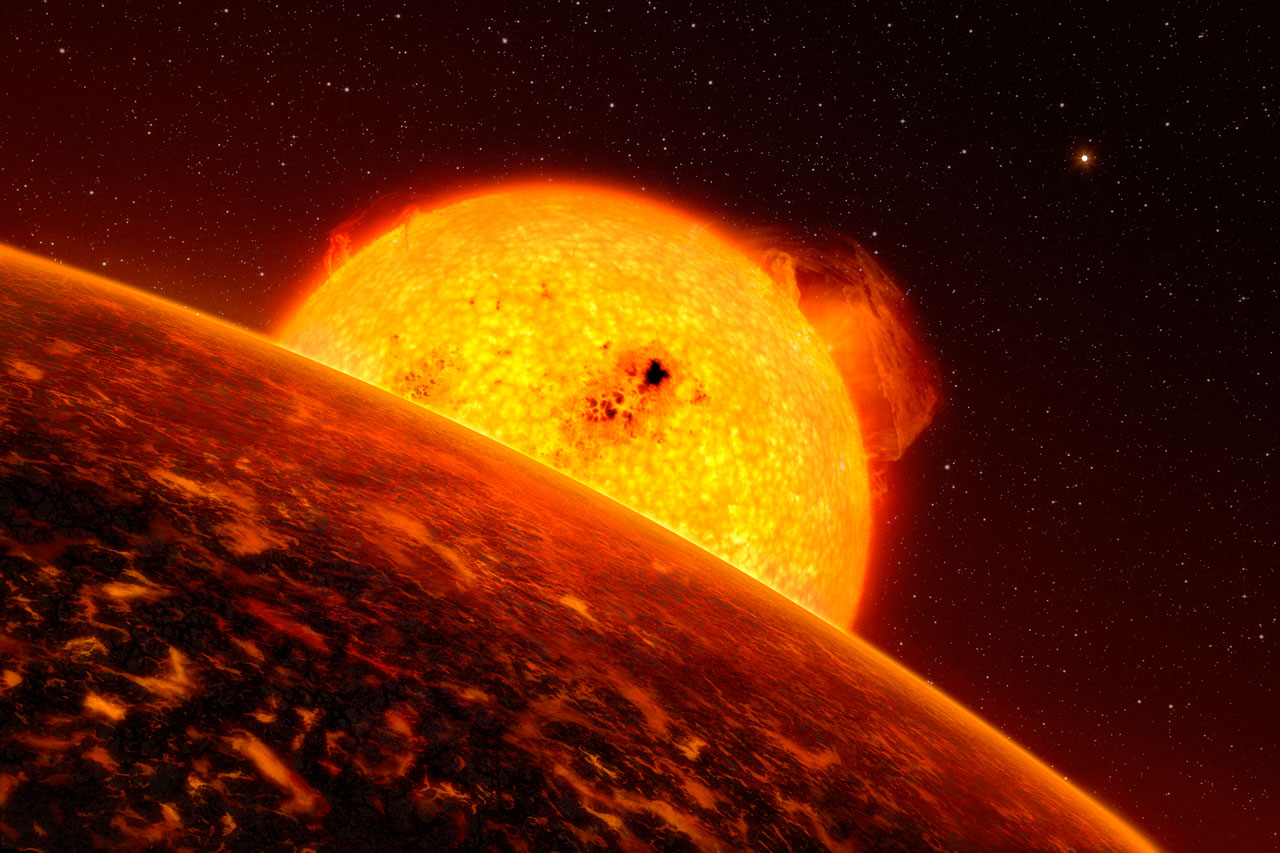
As much as 95% of an exoplanet's water could be trapped forever deep inside its iron core, transforming what we thought we knew about water worlds and potentially rendering them even more habitable than we realized.
"Planets are much more water-abundant than previously assumed," said Caroline Dorn, who is professor of exoplanets at ETH Zurich in Switzerland, in a statement.
When planets are born by accreting rubble and enduring collisions with other protoplanets, they become so hot that their entire surface is covered in an ocean of molten rock. This magma eventually cools to form a silicate-rich mantle and solid crust overlying a deep core of molten iron that assembles over time as heavier materials sink to the center of the planet.
Among the materials that planets are built out of is water, and in a planet's early days, water is present and dissolved in the magma ocean. Previous research has found that young planets of a similar size and mass to Earth — and therefore with relatively moderate internal pressures and temperatures — are able to draw the dissolved water in the magma down toward their core. Indeed, one study found that Earth contains at least dozens of times more water in its interior than it does on the surface in the form of our familiar oceans.
Related: 25 years of exoplanet hunting hasn't revealed Earth 2.0 — but is that what we're looking for?
"A large share of the iron is initially contained in the hot magma soup in the form of droplets," said Dorn. The water in the magma can combine with these iron droplets as they sink toward the core. "The iron droplets behave like a raft that is conveyed downwards by the water."
This is fine for planets of Earth's stature, but many of the rocky exoplanets being discovered by astronomers are much larger than Earth. These so-called super-earths can have masses up to 10 times that of our planet, but it hasn't been clear whether such worlds, with their more extreme internal conditions, could draw water down from the magma ocean as happened on Earth.
Using computer modeling to understand how water interacts with the molten magma surface of a young, hot rocky planet, Dorn, along with researchers Haiyang Luo and Jie Deng from Princeton University, has now answered that question, finding that, even on super-earths, much of a planet's water can end up in its interior.
"The larger the planet and the greater its mass, the more the water tends to go with the iron droplets and become integrated in the core," said Dorn. "Under certain circumstances, iron can absorb up to 70 times more water than silicates. However, owing to the enormous pressure at the core, the water no longer takes the form of H20 molecules, but is present in hydrogen and oxygen."
This water is so deep that it is trapped in the core forever, with no way of reaching it, so it is not of any use to life on or near the surface of a planet. However, it could assist habitability in other ways.
By measuring the mass and radius of exoplanets — using radial velocity Doppler measurements and transits, respectively — we can calculate the density of these worlds (by dividing the planet's mass by its volume, which is calculated from its radius). Some exoplanets have a density that implies a substantial fraction, perhaps up to a quarter of their mass, is made from water.
The assumption had been that this water was present on the surface in the form of an ocean tens of kilometers deep, but if this new research is correct, then in actual fact most of the water would be inside the planet, and water-worlds with deep global oceans might be rare. Although water is essential for life, a planet with only water on the surface (and no land) might not be habitable. For example, nutrients to feed life wash into the sea from land, and that same run-off process is a vital part of the carbon cycle that maintains planetary climates over long timescales.
Supposed "Hycean" worlds — named after a portmanteau of hydrogen and ocean — deserve further investigation, Dorn believes, to test the theory that water is being brought inside a planet. Hycean planets have a rich hydrogen atmosphere, but had also been thought capable of hosting deep oceans in habitable temperatures.
When a planet's mantle is cooling, and before oceans form, some of the water dissolved in its rock can de-gas and rise to the surface, where it can be released into the atmosphere.
"So, if we find water in a planet's atmosphere, there is probably a great deal more in its interior," said Dorn.
In particular, the exoplanet TOI-270d, which orbits a red dwarf star 73 light-years from Earth and which has a mass 4.78 times greater than our planet, is of interest to Dorn, who was part of a team that has studied its atmosphere with the James Webb Space Telescope and found methane, carbon dioxide and water vapor.
"Evidence has been collected there of the actual existence of such interactions [of water] between the magma ocean in its interior and the atmosphere," said Dorn.
The ability of water to seep into a planet rather than pool to great depths on its surface means that there is even greater potential for more habitable planets with shallower oceans out there in the galaxy.
The research was published today (Aug. 20) in the journal Nature Astronomy.







